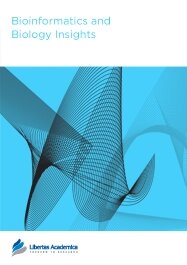

Publication Date: 11 Oct 2010
Type: Review
Journal: Bioinformatics and Biology Insights
Citation: Bioinformatics and Biology Insights 2010:4 113-125
doi: 10.4137/BBI.S5737

Recent progress in the biochemical classification and structural determination of allergens and allergen–antibody complexes has enhanced our understanding of the molecular determinants of allergenicity. Databases of allergens and their epitopes have facilitated the clustering of allergens according to their sequences and, more recently, their structures. Groups of similar sequences are identified for allergenic proteins from diverse sources, and all allergens are classified into a limited number of protein structural families. A gallery of experimental structures selected from the protein classes with the largest number of allergens demonstrate the structural diversity of the allergen universe. Further comparison of these structures and identification of areas that are different from innocuous proteins within the same protein family can be used to identify features specific to known allergens. Experimental and computational results related to the determination of IgE binding surfaces and methods to define allergen-specific motifs are highlighted.
PDF (4.33 MB PDF FORMAT)
RIS citation (ENDNOTE, REFERENCE MANAGER, PROCITE, REFWORKS)
BibTex citation (BIBDESK, LATEX)
XML
PMC HTML
Bioinformatics and Biology Insights helps to reach all people with the latest results on research which directly helps them and with their needs. Three of our co-authors are from Burkina Faso, the malaria holoendemic region our research is based on, and serving as motivation for all our efforts for better treatment of malaria. It is good to be social and it is good to promote science world-wide through open access.

All authors are surveyed after their articles are published. Authors are asked to rate their experience in a variety of areas, and their responses help us to monitor our performance. Presented here are their responses in some key areas. No 'poor' or 'very poor' responses were received; these are represented in the 'other' category.See Our Results
Copyright © 2013 Libertas Academica Ltd (except open access articles and accompanying metadata and supplementary files.)
Facebook Google+ Twitter
Pinterest Tumblr YouTube